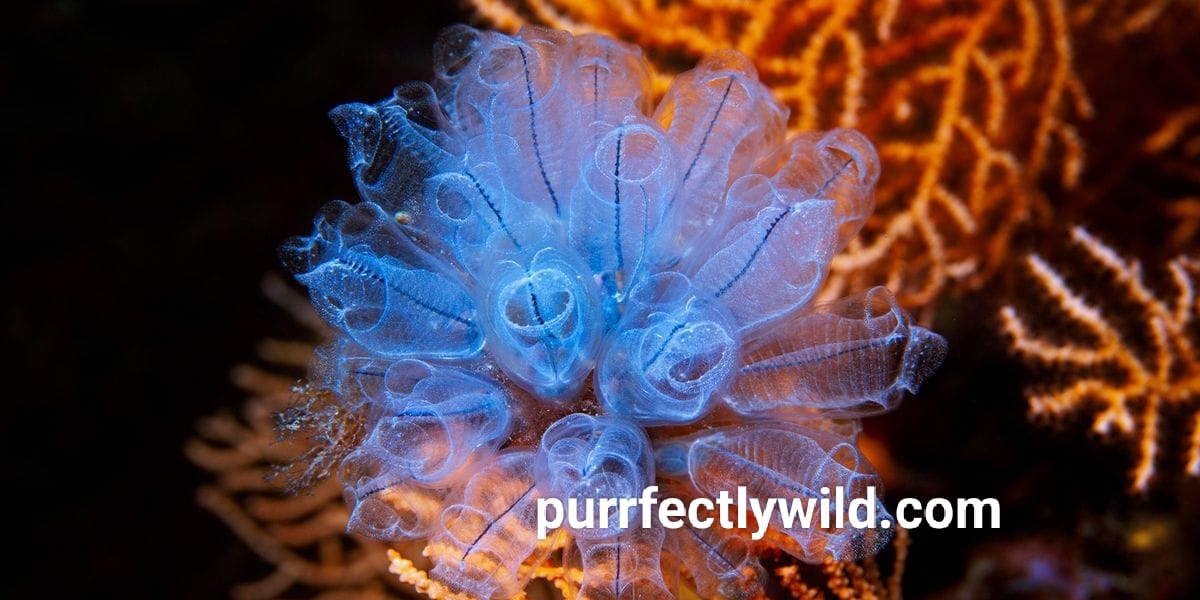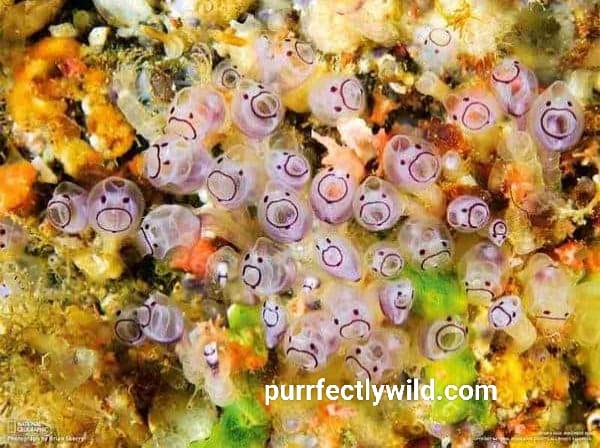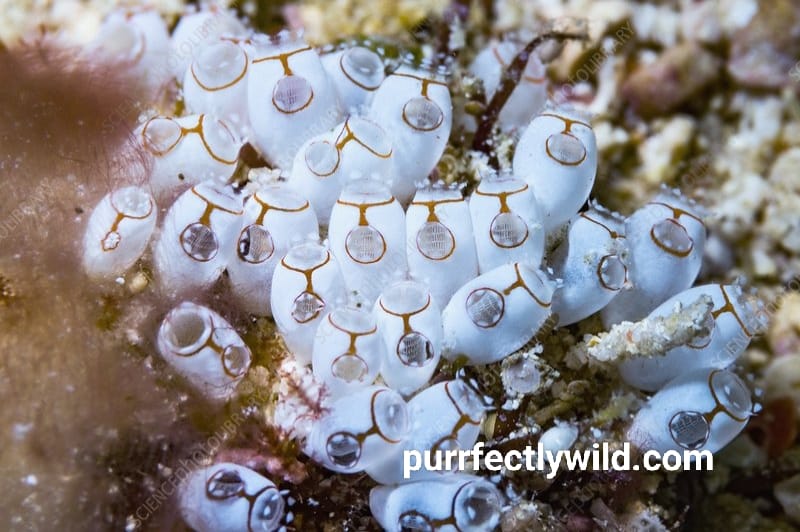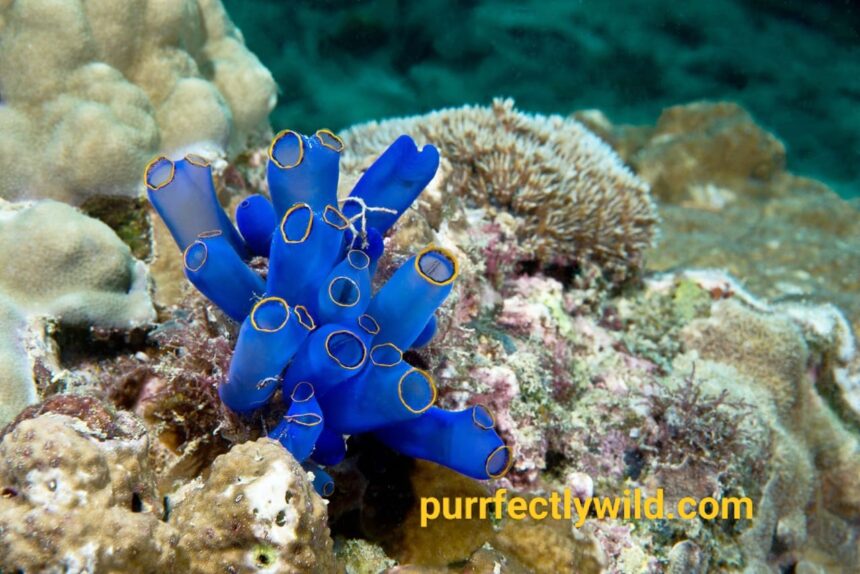In the oceans, there are many creatures that are pretty unique and have really cool ways of defending themselves. And among them is the sea squirt, which stands out mainly because, although not powerful or fast, its protection method is not only extremely effective but also, admirably simple… it doesn’t taste good. Although they may seem to be blobs of defenseless tunicates stuck to rocks or coral reefs, sea squirts have to rely on a very successful chemical system, which helps to keep away any predators that might otherwise have a go at them. This article will shed light on the world of the sea squirts, and tell you exactly how these incredibly simple animals have become so complicated when it comes to defense.
What Are Sea Squirts?
The natural defense mechanism of Sea squirts is important to know first. Sea squirts are part of a larger group of invertebrates called Tunicata. Though small, these marine animals share a not-so-distant family relationship with vertebrates – including humans. They live all over the world, in all oceans, from shallow coastal waters to the deaf vessels, and are often observed clinging to rocks, piers, or coral reefs.
A sea squirt wraps its body in a firm protective membrane called a “tunic,” so it gets its name from it—the tunic material is made from cellulose, often found in plant cells. The outer covering is considered a body protective layer, and here, the centraltunic’s main concept is cellulose, which is deriveis d from its nameis . Moreover, the body of the sea squirt is produced through a hard covering called a tunic; this hard exterior is made of cellulose, which makes up a plant structure. While the cellulose tunic protects the sea squirt’s physical, it is not their only defense mechanism. But the sea squirt’s most effective defense mechanism relies not on their tunic—a hard cellulose case that protects against physical harm—but within their body tissues.

The Role of Chemical Defenses in Sea Squirts
The primary reason sea squirts can survive in the ocean’s predator-filled waters is that they produce chemical compounds that make them unappetizing or toxic to potential predators. These chemical defenses are either stored in their tissues or secreted into their surroundings.
Secondary Metabolites: The Secret to Their Survival
Sea squirts produce numerous secondary metabolites, which are organic compounds that aren’t directly involved in the organism’s growth, development, or reproduction. Instead, these compounds function as protection mechanisms against predators, parasites, and even competition. For sea squirts, those secondary metabolites make them distasteful or possibly poisonous to many marine predators.
Researchers have identified several types of chemicals in sea squirts, such as alkaloids, peptides, and terpenoids. These compounds often have sturdy, sour tastes, making them unappealing to fish, crabs, and other marine creatures. In some cases, these chemical substances can cause contamination or death in predators that devour the ocean squirt.
One of the maximum well-known examples of sea squirt defense is a compound called didemnins, which are determined in certain species of tunicates. Didemnins have been proven to have effective antiviral and antitumor residences, that have attracted the interest of pharmaceutical researchers. However, for sea squirts, didemnins serve a distinctive cause – they act as a deterrent, discouraging predators from ingesting them.
Aposematic Signaling: Warning Predators
Many animals that depend upon chemical defenses use aposematic signals to warn ability predators in their toxicity or unsightly taste. Aposematic alerts can take the shape of vivid hues, formidable patterns, or distinct odors. In the case of sea squirts, a few species show off vivid, conspicuous colorations, such as reds, oranges, and yellows, which might also function a visible warning to predators that they’re not well worth consuming.
While it’s uncertain how powerful these visual indicators are in the ocean, where visibility may be restricted, it’s probably that they still play a function in deterring predators. For example, a predator that has formerly eaten a brightly coloured sea squirt and experienced the unpleasant consequences may also learn to keep away from similarly colored organisms within the destiny.
The Sea Squirt Life Cycle and Its Implications for Defense
Sea urchins have interesting changes in their life cycle, which can also help protect them. As snails, marine divers are free swimmers and have vertebral systems similar to those found in vertebrates. But once they find a suitable niche, they evolve by attachment, losing their notochord and becoming passive adults
As seawater floats mature, they become immobile, making them vulnerable as prey. This is where their vaccines become especially important. Unable to avoid predators, sea urchins rely on their unsightly, toxic gills to remain safe. By producing these compounds, they are easily consumed, allowing them to continue their simple filtering lifestyle.

Reciprocal relationships and security
Some sea urchins, in addition to vaccination, form bonds with other organisms that enhance their safety. For example, some species of seawater contain algae or photosynthetic bacteria in their membranes. This symbiosis can provide additional benefits, such as the production of oxygen or the nutrient support of ocean currents.
In some cases, these symbiotic organisms can even help protect ocean currents by producing toxic or unpalatable chemicals themselves. This extra protection makes ocean currents even less attractive to predators. The symbiosis between ocean currents and these microorganisms is a classic example of how marine life can form a complex life-enhancing relationship
The Sea Squirt Life Cycle and Its Implications for Defense
Sea urchins have exciting changes in their life cycle, which can also help protect them. As snails, marine divers are free swimmers and have vertebral systems similar to those found in vertebrates. But once they find a suitable niche, they evolve by attachment, losing their notochord and becoming passive adults.
As seawater floats mature, they become immobile, making them vulnerable as prey. This is where their vaccines become especially important. Unable to avoid predators, sea urchins rely on their unsightly, toxic gills to remain safe. By producing these compounds, they are quickly consumed, allowing them to continue their simple filtering lifestyle.
Symbiotic Relationships and Defense
In addition to their chemical defenses, some sea squirts form symbiotic relationships with other organisms to enhance their protection. For example, certain species of sea squirts harbor photosynthetic algae or bacteria within their tissues. These symbiotic organisms can provide additional benefits, such as producing oxygen or helping the sea squirt acquire nutrients.
In some cases, these symbiotic organisms may also contribute to the sea squirt’s defense by producing toxic or distasteful compounds themselves. This added layer of protection makes the sea squirt even less appealing to predators. The symbiosis between sea squirts and these microorganisms is a remarkable example of how life in the ocean can involve complex relationships that enhance survival.
Predator Deterrence: A Broader Ecological Perspective
From an ecological perspective, sea squirts’ defense mechanisms don’t just protect individual organisms – they can influence entire ecosystems. By producing chemical compounds that deter predators, sea squirts help maintain the balance of marine food webs. If predators consistently avoid sea squirts due to their distasteful or toxic nature, this can reduce predation pressure on the sea squirts and allow them to thrive in their environments.
Additionally, the chemicals produced by sea squirts can affect other organisms in their surroundings. For instance, some of the compounds they release may inhibit the growth of nearby competitors, such as algae or other filter feeders. In this way, sea squirts may indirectly shape the composition of the communities in which they live.
Sea Squirts as a Source of Novel Bioactive Compounds
The same chemical compounds that protect sea squirts from predators have also attracted the attention of scientists and researchers. Over the past few decades, marine biologists and chemists have isolated numerous bioactive compounds from sea squirts, many of which have potential applications in medicine.
For example, the compound didemnin, mentioned earlier, has been studied for its potential use in cancer treatments and as an antiviral agent. Other compounds found in sea squirts have shown promise as antibiotics, antifungals, and immunosuppressants.
This area of research is still in its early stages, but the fact that sea squirts produce such a wide variety of chemical compounds highlights their importance not only as a subject of scientific study but also as a potential source of new medicines. Their natural defense mechanisms, which evolved to protect them from predators, may ultimately benefit human health as well.
Conclusion: A Unique Defense in the Ocean’s Arsenal
Sea squirts may not be the most glamorous or visually striking creatures in the ocean, but their defense mechanisms are a testament to the power of evolution. By producing chemical compounds that make them unappetizing or toxic, sea squirts have found a highly effective way to deter predators and survive in their environments.
Their reliance on chemical defenses, combined with their symbiotic relationships and potential medical applications, makes sea squirts a fascinating subject for both marine biology and pharmacology. As researchers continue to study these intriguing creatures, we may uncover even more secrets about how they protect themselves – and how these mechanisms could benefit human society in the future.
For now, one thing is clear: when it comes to survival in the ocean, sometimes all it takes is being too unappetizing to eat.



